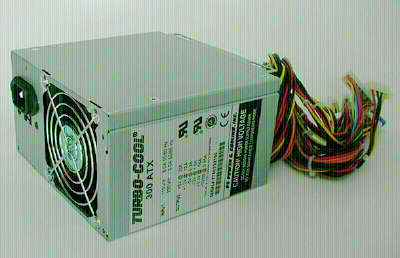Power Supply Standardization
Over time, there have been at least six different standard power supplies for personal computers. Recently, the industry has settled on using ATX-based power supplies. ATX is an industry specification that means the power supply has the physical characteristics to fit a standard ATX case and the electrical characteristics to work with an ATX motherboard.
PC power-supply cables use standardized, keyed connectors that make it difficult to connect the wrong ones. Also, fan manufacturers often use the same connectors as the power cables for disk drives, allowing a fan to easily obtain the 12 volts it needs. Color-coded wires and industry standard connectors make it possible for the consumer to have many choices for a replacement power supply.
 A PC power supply removed from its PC case. Cables and connectors at right supply DC voltages. |
Advanced Power Management
Advanced Power Management (APM) offers a set of five different states that your system can be in. It was developed by Microsoft and Intel for PC users who wish to conserve power. Each system component, including the operating system , basic input/output system (BIOS) , motherboard and attached devices all need to be APM-compliant to be able to use this feature. Should you wish to disable APM because you suspect it is using up system resources or causing a conflict, the best way to do this is in the BIOS. That way, the operating system won't try to reinstall it, which could happen if it were disabled only in the software.
Back to How It Works
› Introduction to How PC Power Supplies Work
› Switcher Technology
› Power Supply Standardization
› Power Supply Wattage
› Power Supply Problems
› Power Supply Improvements